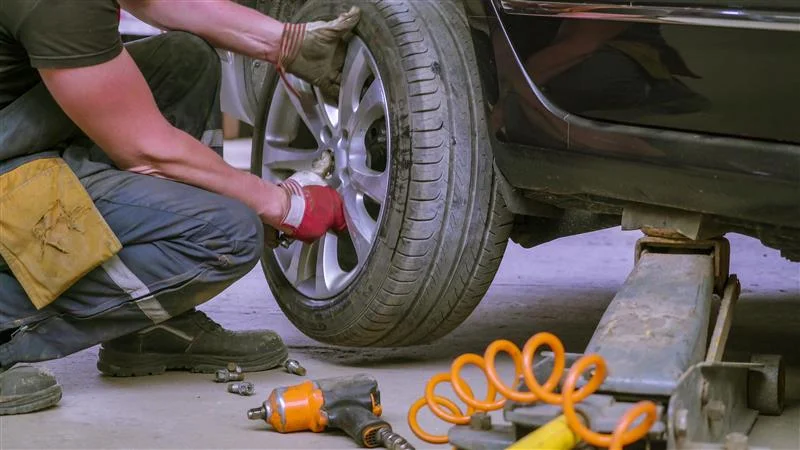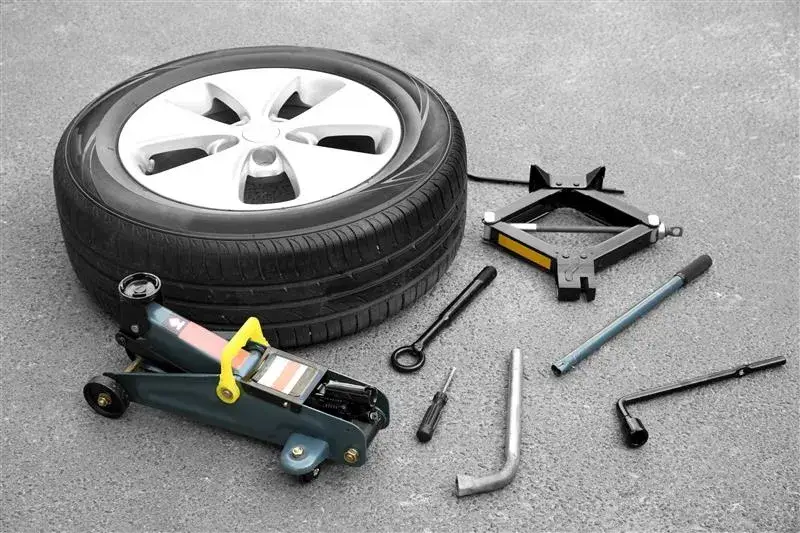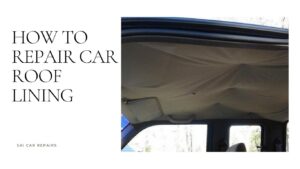What Is a Tyre Puncture Repair Kit?
A small puncture in a tubeless tyre can be temporarily fixed with a small piece of equipment called a tyre puncture repair kit. Typically, it consists of:
- Insertion tool
- Reaming tool
- Rubber repair strips (also called plugs)
- Rubber cement (in some kits)
- Gloves and a cutter
This kit is handy if you’re constantly on the go and can’t get to a car repair immediately. But remember that this is only a short-term solution, and you should get the tyre checked out by a professional as soon as possible.
When Can You Use?
Before we begin, let’s make one thing clear: a tyre puncture repair kit works only on specific kinds of damage. It can be used if:
- A nail, screw, or similar object causes the puncture.
- The hole is in the tread area (not the sidewall).
- The tyre is tubeless.
- The hole is not too large (usually under 6mm in diameter).
It’s advisable to have professional vehicle repair immediately if the puncture is too large or the sidewall of your tyre is damaged.
How to Use a Tyre Puncture Repair Kit
Step-by-Step:
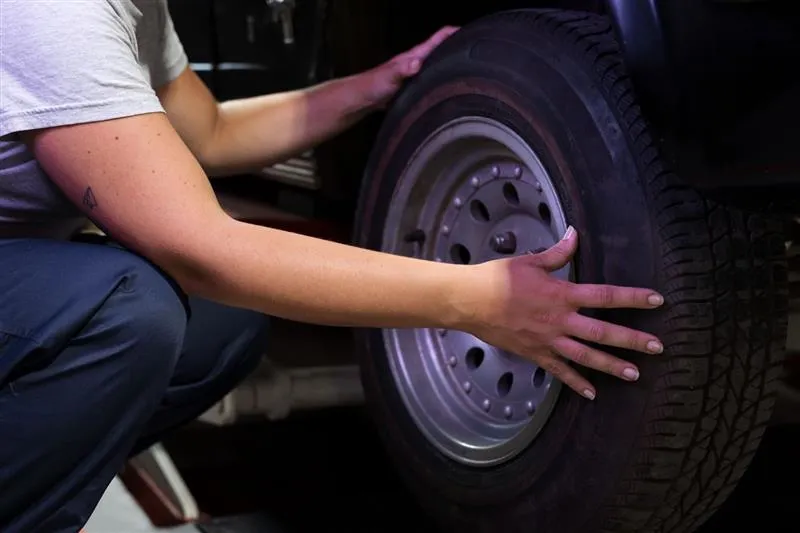
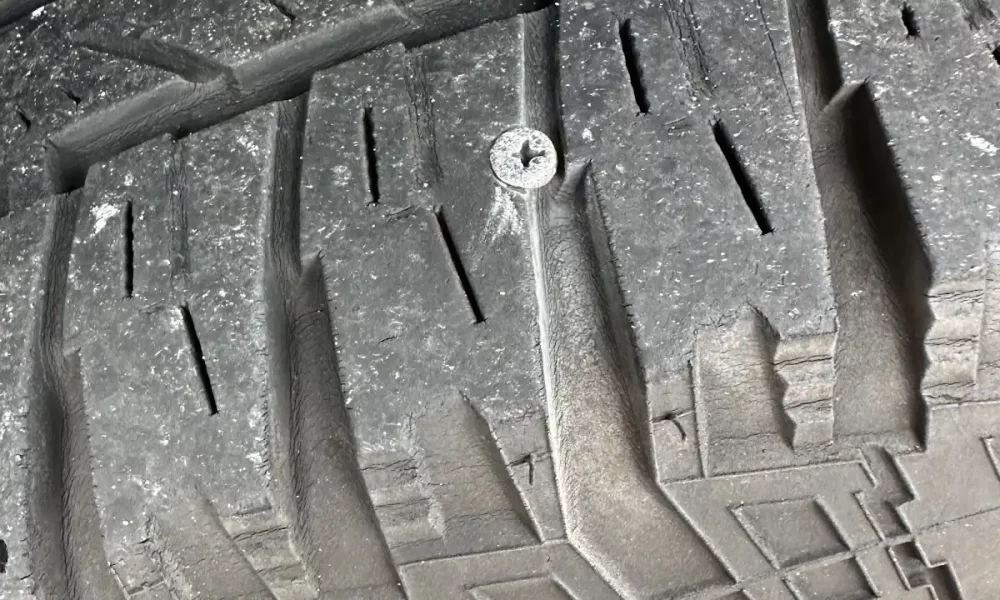
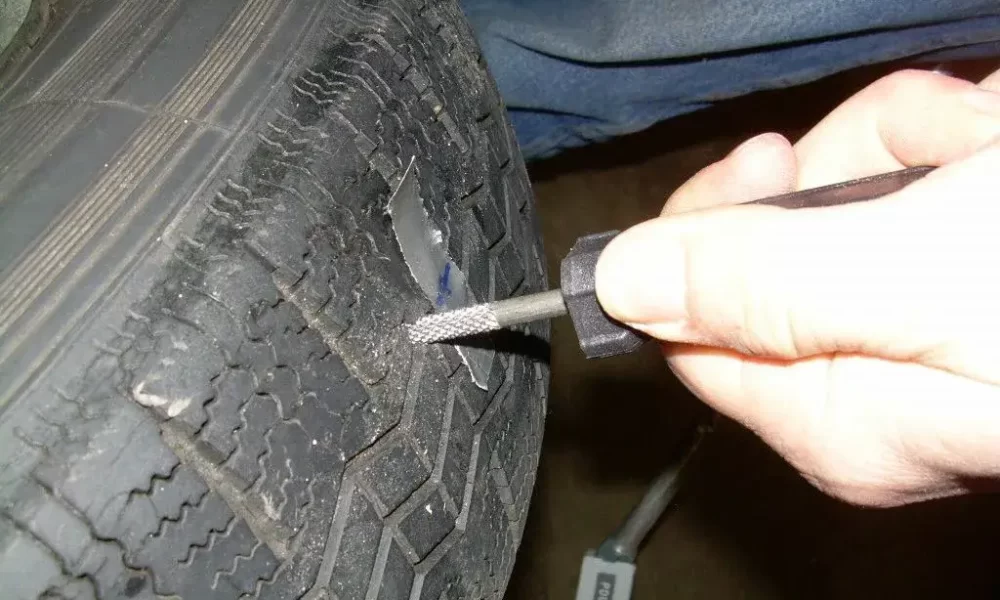
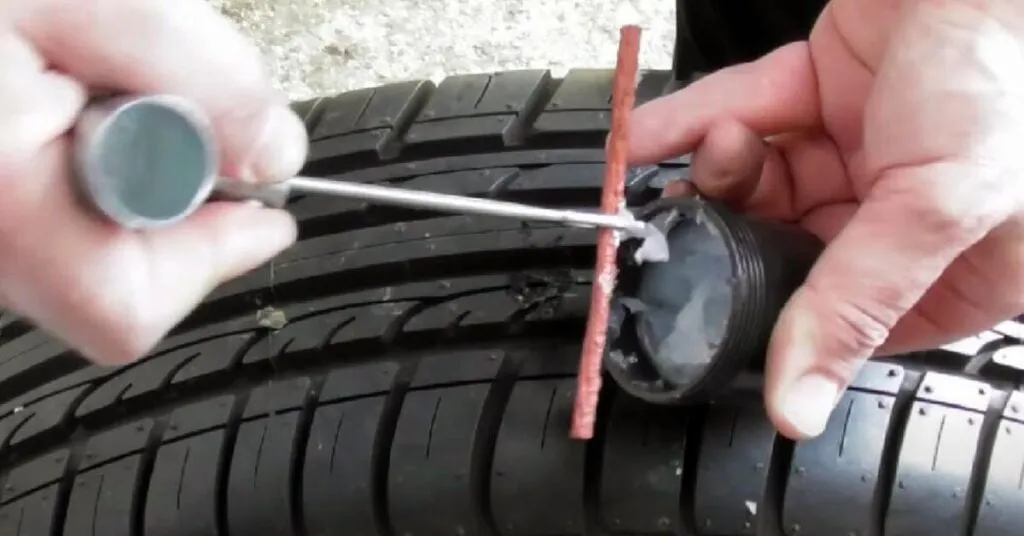
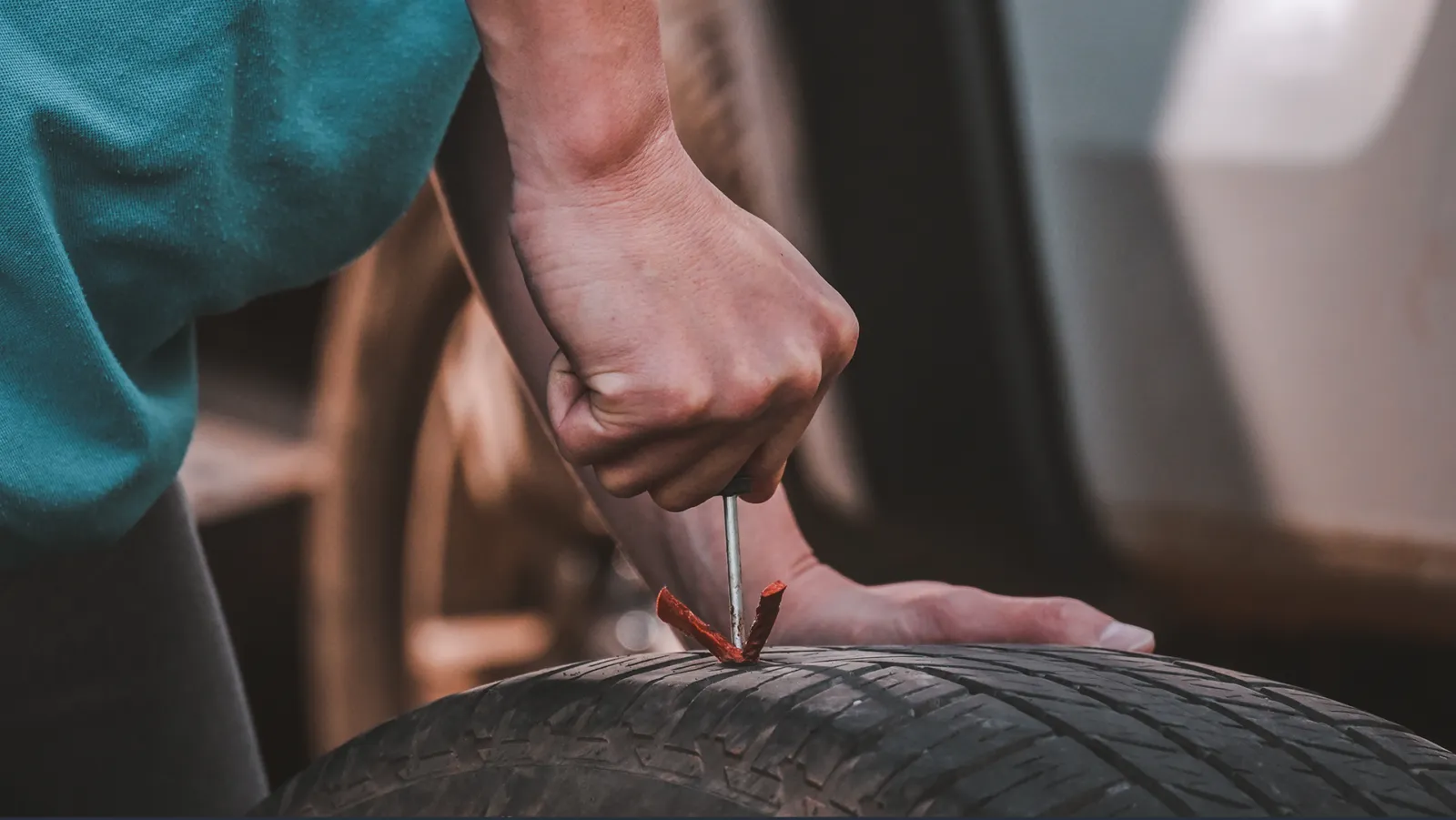
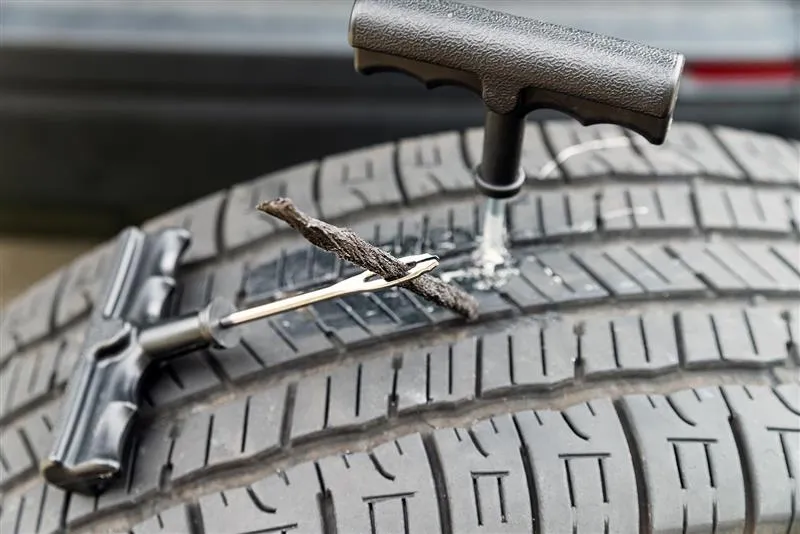
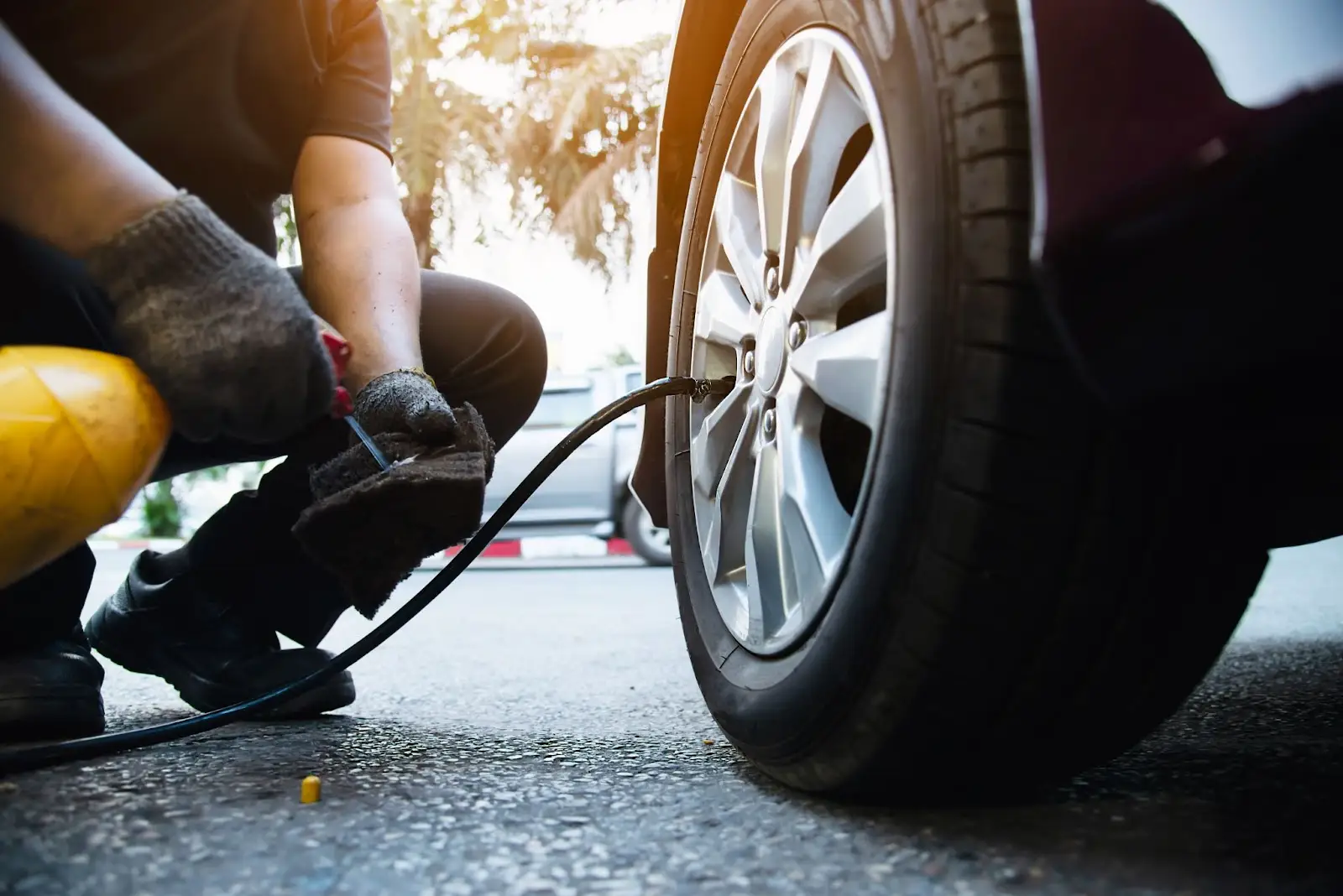
Please drive carefully and monitor the tyre’s behavior until it is filled and steady. With this modification, you should be able to reach your destination or the closest mechanical repairs safely.
Important Safety Tips
- As crucial as a spare tyre, always keep your tyre puncture repair kit in your car.
- Don’t put off visiting a reputable auto repair facility if you have any doubts regarding the quality of the work.
- Never try to use these kits to fix enormous blowouts or sidewall punctures.
- The patch is not a replacement for a genuine, long-term solution, even though it might last a while.
Final Thoughts
